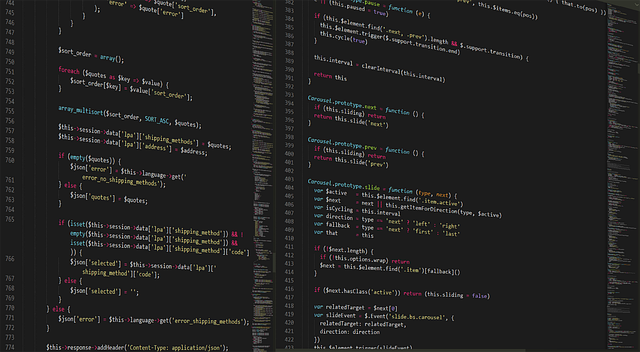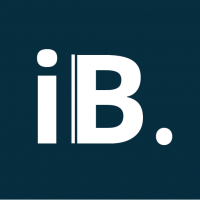10 Fundamentals of Behavior Driven Development

Strong 8k brings an ultra-HD IPTV experience to your living room and your pocket.
In the constantly shifting landscape of software development, many frameworks come and go. However, only some have a long-lasting influence. One such framework that has become rather relevant lately is Behavior Driven Development (BDD).
In contrast to conventional development methods, BDD typically emphasizes understanding and fulfilling user behavior through cooperation, automation, and a common language among developers, testers, and stakeholders. This article delves into the core concepts of BDD, uncovering the 10 fundamental tenets that support its efficacy in contemporary software engineering.
1. BDD's Essence
What is Behavior driven development? It can be understood as a collaborative method to promote communication and coordination among various stakeholders. In addition, unlike other traditional approaches primarily focusing on code development.
Behavior driven development typically begins with analyzing user behavior and articulating requirements in a language understandable to all parties involved. Therefore, by bridging the gap between technical and non-technical stakeholders, BDD guarantees that the software matches its users' sincere requirements.
2. Embracing Ubiquitous Language
BDD further emphasizes using a shared language throughout development. This unified language, ideally understood by testers, developers, and business executives alike, significantly promotes straightforward communication and further decreases the possibility of misunderstandings. By utilizing terminology comprehensible to everyone involved, BDD improves cooperation and guarantees that the program represents the expected behavior.
3. Writing Scenarios with Given-When-Then:
BDD scenarios are often written in the Given-When-Then format, which clearly defines intended behaviors. The Given clause ideally establishes the beginning context, the When clause defines the action or event under test, and the Then clause gives the expected result. This organized method not only provides executable documentation but also directs the development process, ensuring that each feature is rigorously tested against its intended function.
4. Fostering Collaboration Through Examples
BDD relies heavily on examples to describe requirements and validate anticipated behaviors, promoting collaboration. Teams may guarantee that all stakeholders understand the system's behavior by giving tangible examples of intended functionality. These examples act as living documentation, essentially guiding development and testing activities while encouraging cooperation and alignment among teammates.
5. Optimizing Acceptance Tests
Automation is the core fundamental of BDD, allowing the continuous validation of desired behaviors all through the development lifespan. Acceptance tests based on BDD scenarios are automated to ensure that the program satisfies the defined criteria. By automating these tests, teams can rapidly spot regressions and verify that new additions work smoothly with existing functionality. This not only shortens the feedback loop, but it also boosts trust in the software's dependability.
6. Integrating BDD with Agile Practices
Further, BDD complements Agile approaches like Scrum and Kanban. By dividing user stories into realistic scenarios and automating acceptance tests, BDD improves the transparency and predictability of Agile development processes. Teams that apply BDD within an Agile framework may produce value more consistently, adapt to change more effectively and guarantee that every increment of work adds to the overall user experience.
7. Continuous Refinement of Scenarios
BDD recognizes that requirements change over time and emphasizes continuous scenario refinement. As a result, BDD scenarios are constantly modified depending on feedback, changes in user demands, or new insights discovered during development. Embracing this iterative approach allows teams to better react to changing needs and guarantee that the product remains aligned with user expectations throughout its lifespan. Even about tdd vs bdd concept can also help teams in testing to the perfection.
8. Enabling Behavior-Driven Design (BDD)
BDD takes the ideas of testing and applies them to the whole design process. By concentrating on desirable behaviors from the start, BDD promotes a user-centric approach to design in which features are built iteratively based on user feedback and evaluated against their intended behaviors. This iterative design method not only produces better user-friendly software, but it also minimizes the likelihood of adding unneeded or poorly implemented functionality
9. Assessing Success with Living Documentation
Traditional documentation might become obsolete and detached from program behavior. In contrast, BDD advocates for the idea of 'living documentation,' in which executable specifications act as the authoritative source of truth for the system's behavior. This living documentation updates with the source, further offering a real-time snapshot of the software's current state and ultimately allowing stakeholders to make informed decisions based on the most recent facts.
10. Embracing an Environment of Collaboration and Feedback
BDD fosters a culture of cooperation, feedback, and continual development. By creating a culture in which developers, testers, and business stakeholders collaborate closely to create, validate, and modify requirements, BDD enables teams to deliver software that really fulfills the demands of its customers. This collaborative culture extends beyond particular projects, impacting the overall approach to software development.
Summing Up
Behavior-driven development (BDD) is an evolutionary shift in software development that prioritizes understanding and fulfilling user behavior through collaboration, automation, and a common language. By adopting the 10 foundations stated in this article, teams may utilize BDD to develop higher-quality software that is aligned with user demands and adaptive to changing requirements.
As more businesses see the value of user-centric development techniques, ACCELQ tool emerges as a beneficial BDD tool for driving innovation, boosting collaboration, and providing excellent user experiences.
Note: IndiBlogHub features both user-submitted and editorial content. We do not verify third-party contributions. Read our Disclaimer and Privacy Policyfor details.







